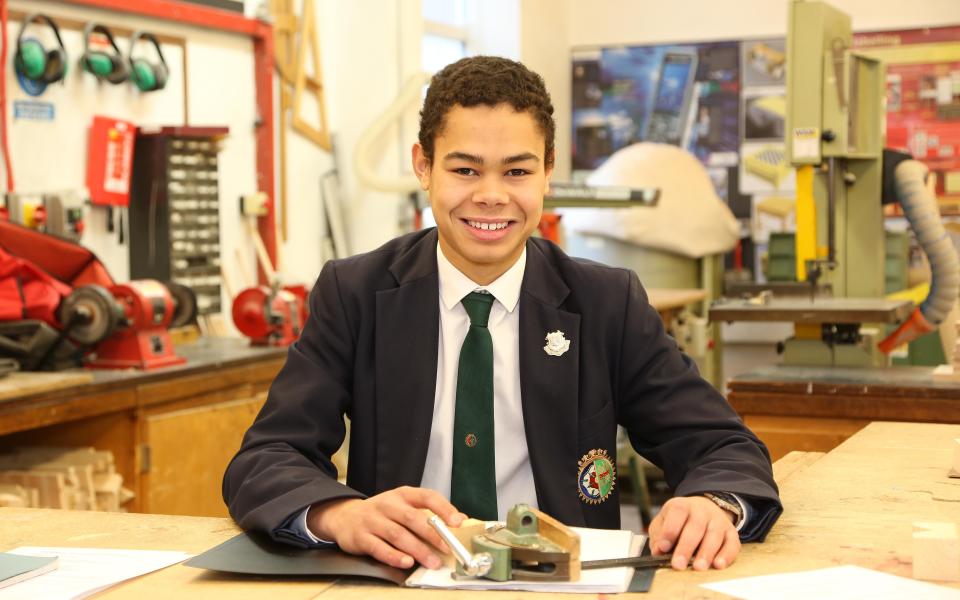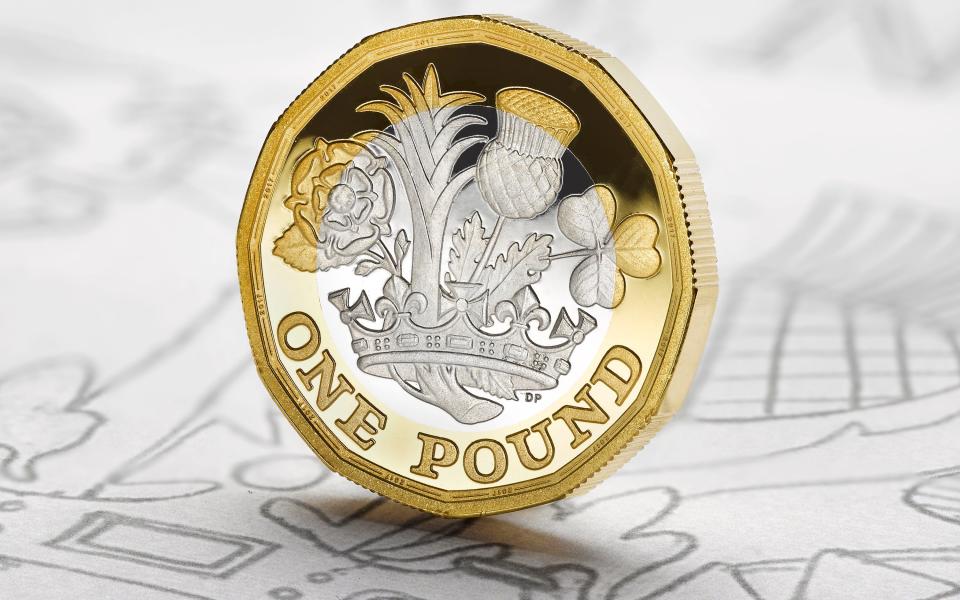Telling tails: the laid-back schoolboy behind the new £1 coin design

When Britain’s brand new, 12-sided £1 coin enters public circulation on Tuesday morning, leaving a trail of quaint pandemonium at vending machines and trolley parks in the process, most of us will study its intricacies with relish. But for David Pearce, the 17-year-old schoolboy responsible for designing its ‘tails’ side, that novelty wore off long ago.
I wanted to draw upon the past but put a new take on it, and creating a properly United Kingdom
David Pearce
“Honestly, I’m not too fussed about it all,” says Pearce, with a level of insouciance that’s impressive even by teenage boy standards. “I’m excited the day’s finally here, but I’ve got A-Levels to focus on now. I’ve put this to the back of my mind a bit.”
Two and a half years ago, as a 15-year-old completing his GCSEs at Queen Mary’s Grammar School in Walsall, Pearce beat more than 6,000 other entrants – among them professional designers, artists, architects and historians – in a nationwide competition launched by the Royal Mint to find a suitable reverse side (the Queen, as ever, bagsied the other with a new portrait) for the oldest still-used currency in the world.
“It was one of my Design and Technology teachers who first heard about it,” Pearce recalls. “He had everyone in the younger years enter, but mentioned it to a few of us at GCSE level too. I thought it might be a good thing to have a go at.”
Their brief was scant. Entrants were told the coin would have 12 sides, like the old threepenny bit, and that it’d be bimetallic (the outside nickel-brass, the inside nickel-plated solid alloy), like our current £2 coin. From there they were simply asked to create something which “unambiguously represents the UK.”
Pearce spent his evenings at home sketching various ideas – heraldic symbols, iconic buildings, British institutions – and studied the tails patterns of the then current ‘round pound’, which has featured everything from the Menai bridge to the Royal coat of arms on its reverse since its introduction in 1983, before settling on a final concept.

“I wanted to draw upon the past, but put a bit of a new take on it. I thought the floral symbols of each country best summed them up, so I decided to weave the rose of England, the leek from Wales, the thistle from Scotland and Northern Ireland’s shamrock together inside the Crown, creating a properly United Kingdom,” he remembers. “I don’t normally do arty drawings, so it was actually really hard.”
Despite having weeks to complete the task, Pearce only completed his drawing on the day of the deadline, eventually sending his application off at 10pm, with two hours to spare. At the behest of his enterprising DT teachers, he had entered a few competitions before, but since he didn’t win those, he forgot all about it.
Some entries weren’t quite so traditional. There were depictions of cups of tea, rainclouds, and even the Rolling Stones’ tongue and lips logo
Then, one spring morning in 2015, Pearce was pulled out of class by his headmaster, Tim Swain, to take a call in his office. It was Geourge Osborne, the then Chancellor of the Exchequer on the line.
“I thought they must have the wrong person, that they’d mixed up the entries or something. I thought it’d be pretty embarrassing if I went to accept it and there’d been a mix-up” says Pearce, whose mother, Maria, also thought her son was joking when he told her – not least due to the £10,000 prize money.
A trip to Number 11 Downing Street to meet the runners up and a beaming Mr Osborne, who was holding holding a copy of his work, soon made it very real.
“We went to a state room and I heard more about the coin and he showed me how it was going to look.”

While the tail’s side of the coin released today is Pearce’s design (look close enough and you’ll even see a subtle ‘DP’ embossed in one corner), his original sketch was sharpened up by a couple of professionals. Their alterations were minimal, though: all the plants now stem from the same root, and the ‘One Pound’ denomination was moved to the bottom.
Some entries weren’t quite so traditional. Among the thousands sent in, there were depictions of cups of tea, rainclouds, the London Eye and even the Rolling Stones’ tongue and lips logo.
Astonishingly, two pupils from Queen Mary’s were chosen to visit Downing Street. Cody Gill, two years below Pearce at school, also made the six-person shortlist.
“It’s all thanks to our teachers . They foster design talent really well,” says Pearce, who now studies DT, Maths and Geography at A Level, and hopes to study architecture at Cambridge – something his prize money will help with.
The exposure shouldn’t hurt, either. After all, the best that most young designers can hope for is a public exhibition. In Pearce’s case, the Royal Mint will be producing 1.5bn copies (and that's before counterfeits, which are promised to be impossible with the new design) of his work before the old coin ceases becoming legal tender in October. In doing so, his work will find its way into the pockets everyone he meets.
So will Pearce be rushing out to see his contribution to British history? As ever, he’s relaxed about the whole affair.
“I went to the Mint once to see them made, but I haven’t got one. I think I’ll just wait until I’m eventually given one in change at the shops. My friends are more excited than me. It’s just something I did once, you know?”

